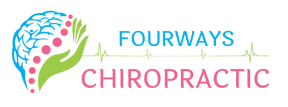In alignment, free from interference, the body regulates and heals itself. Out of alignment, the body is not able to regulate and heal and as a result we may experience symptoms of dis-ease. Most would be familiar with the typical symptoms such as back pain and headaches for instance that brings people in to see a chiropractor in the first place, but, did you know, that only 10% of the nervous system is pain sensing! So if you have no pain, that does not mean you are in a good state of health and wellbeing necessarily. Other symptoms of the nervous system being out of balance, for instance being more over aroused, would be things like cold hands and feet, tight muscles, teeth grinding, anxiety, heart palpitations, restless sleep, high blood pressure, irritable bowel and accelerated aging. Signs of being more under aroused would be having poor attention, being impulsive, disorganized, depressed, having poor concentration, irritability, having low energy and difficulty waking in the mornings. The system could bounce between states, being unstable, with added symptoms of migraines or headaches, hot flushes, seizures, sleepwalking or bedwetting, eating disorders, food sensitivities, panic attacks, mood swings and bi-polar disorders. If left uncorrected, the system eventually becomes exhausted, where we see more of the chronic conditions plaguing our society today with conditions like cancer, diabetes, auto-immune conditions like rheumatoid arthritis and multiple sclerosis, depression, chronic fatigue syndrome, fibromyalgia, ALS and the likes.
Do you have any of the symptoms above? Do you know anyone that does? It is not too late, it can be corrected and reversed. In alignment, the body heals. Specific neurologically based chiropractic care helps to bring the system back into alignment, so that is can regulate and heal again.
I have seen this time and time again with so many of my patients, with myself. I was diagnosed with Multiple Sclerosis in 2007 and thanks to chiropractic and the chiropractic lifestyle, this condition has reversed. So what else is possible for you?

 RSS Feed
RSS Feed